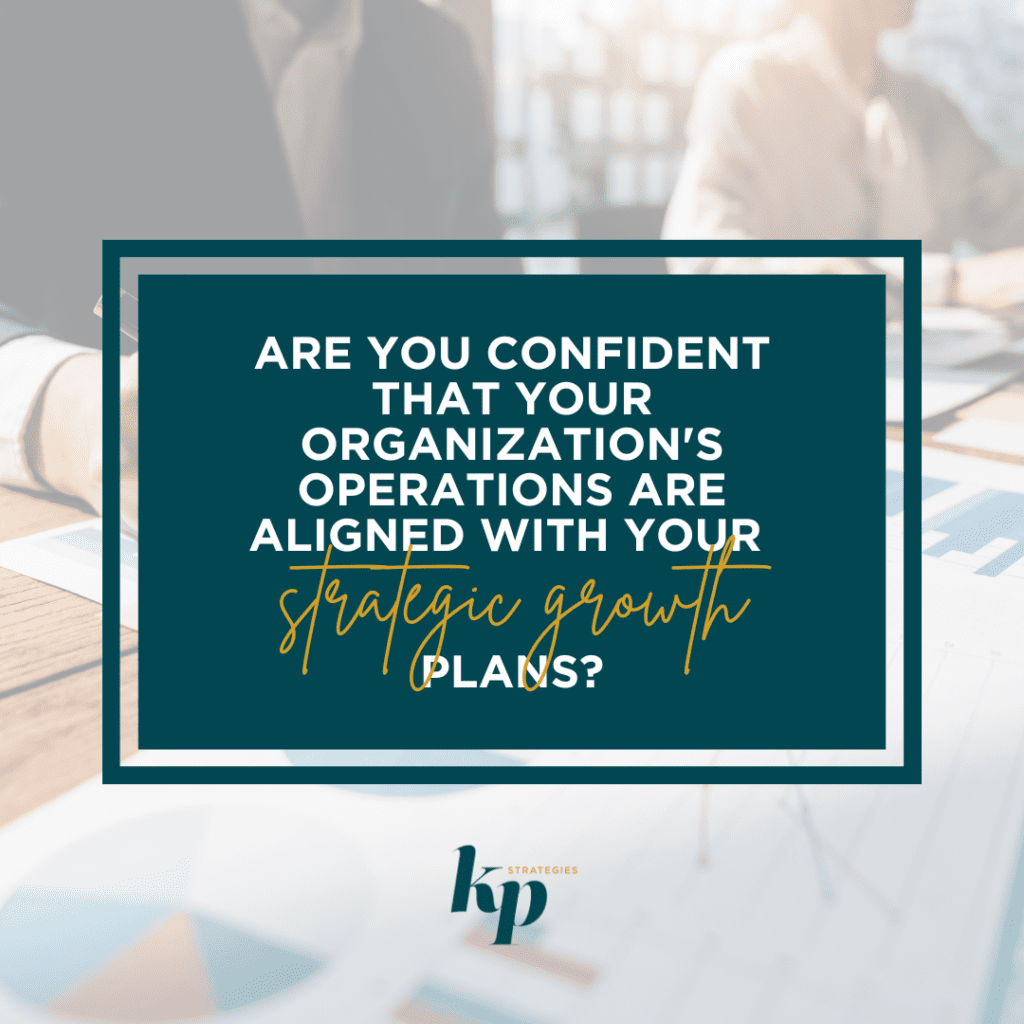Ensuring that Operations can match your strategic growth plans is crucial for sustained success. Evaluating your Operations effectively entails assessing different facets of your business processes to ensure they are efficient, productive, and in line with organizational objectives.

In a mid-market services company, operations may encompass several key functions such as:
- Customer Support
- Purchasing
- Contracting
- Information Technology
- Project Management
- Supply Chain Management
- Quality Assurance and Control
- Facilities Management
So how can you ensure your operations are keeping pace with your strategic growth plans?
Here are 12 steps to assess your operational effectiveness:
1. Evaluate Leadership: Assess whether your current operational leadership is equipped to propel your organization towards its growth targets in the next three years. Remember, what got you here may not get you there.
2. Align Operational Plan with Strategic Goals: Ensure your operational plan is intricately aligned with your three-year strategic roadmap. Alignment between these plans is crucial for sustaining intentional growth.
3. Fit for Growth Evaluation: Validate your operational plan’s financial viability and ensure it is aligned with your 3-year strategic objectives and your budget is aligned to your yearly Operational Plan. Identify areas for budget reallocation to support growth initiatives effectively.
4. Define Objectives and KPIs: Clearly define operational objectives and establish key performance indicators (KPIs) to measure success. These KPIs may include production output, quality standards, cost efficiency, customer experience, and employee productivity.
5. Review Business Processes: Identify and document key business processes using process mapping techniques. Visualize workflows to pinpoint inefficiencies and areas for improvement.
6. Assess Process Efficiency: Analyze cycle times, bottlenecks, and resource utilization to assess process efficiency. Identify redundancies and streamline workflows to enhance operational agility.
7. Evaluate Resource Allocation: Assess the allocation of resources across different operational areas. Optimize resource utilization to drive better outcomes and support growth initiatives effectively.
8. Quality Management Review: Evaluate quality management systems and processes to ensure products or services meet quality standards. Implement corrective actions to address quality issues and enhance the customer experience.
9. Review Customer Support and Satisfaction: Measure customer experience and satisfaction levels. Gather feedback to identify areas for improvement and enhance overall customer support processes.
10. Supply Chain Performance: Assess the performance of your supply chain, including suppliers and logistics partners. Identify opportunities for optimization to improve lead times, reliability, and cost-effectiveness.
11. Conduct Employee Feedback and Engagement: Gather feedback from employees to assess their experience, engagement, and morale. Understand their perspectives on work processes, leadership, and organizational culture.
12. Benchmark Against Industry Standards: Benchmark operational performance against industry peers and best practices. Identify areas of strength and opportunities for improvement to drive operational excellence.
By following these steps, you can effectively evaluate your organization’s operational effectiveness and identify opportunities for optimization and improvement. Embrace a culture of continuous improvement to drive greater efficiency, productivity, and profitability within your organization.